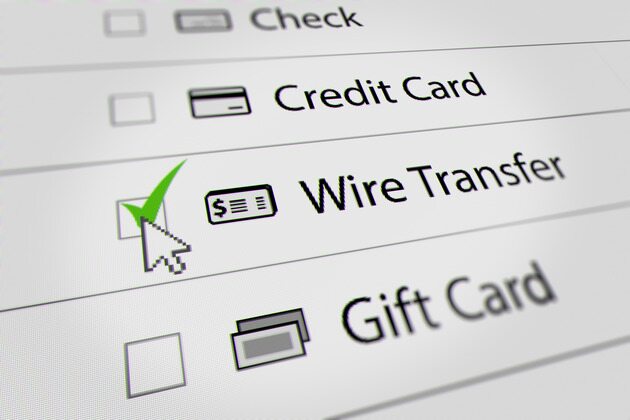ACH Versus Wire Transfers: Which Payment Method Is Right for Your Business?
April 24, 2024

Wire transfers and Automated Clearing House (ACH) transfers power the exchange of trillions of dollars every year. When you need to send money fast, these payment types get the job done. But they’re not the same.
If time is of the essence, wire transfers get your money from point A to point B in less than a day, even internationally. But if a cost-effective option is your top priority, ACH transfers offer the lowest fees.
Here’s a guide to ACH versus wire transfers, how they work, and their main differences.
What’s an ACH Transfer?

The ACH is a batch-processing network of over 10,000 banks and financial institutions. In 2023, these banks joined forces to process $80 trillion over 31.5 billion transactions.
ACH transfers use this network for affordable electronic exchanges between domestic bank accounts. This means they only work in the U.S.
These transfers are more efficient because they process payments in batches instead of one by one. This reduces costs for participating banks. Plus, the savings go straight to customers through lower fees. In fact, ACH payments are so affordable that some banks offer them for free.
ACH transfers may be inexpensive, but there’s a tradeoff. The batch transfers happen at specified times each day, so they can take several days to process. Same-day ACH transfers are available, but they typically cost more.
Common uses for ACH transfers include:
- Direct deposits
- Recurring payments
- Peer-to-peer transfers
- Activities that aren’t time-sensitive
How an ACH Transfer Works
Every ACH transfer takes roughly the same journey from one bank account to another. Here are the key steps:
- Origination. To start an ACH transfer, the bank needs to know how much money to send and who to send it to. Fill out a form with basic information in a web or mobile app. Include the recipient’s name, bank account number, and routing number. After initiating the transaction, you receive a confirmation receipt, usually by email.
- Batching. The originating bank adds the pending transaction to a pool. The pool includes other ACH transactions waiting to go to the ACH.
- Submission to the Network. The originating bank sends the batch to an ACH Operator. The operators are an intermediary between banks.
- Sorting and Distribution. The ACH Operator sorts the transactions by the receiving banks’ routing numbers. Then, it distributes the transfers to their destinations.
- Receiving Bank Processing. Once a transaction arrives, the bank verifies the details. Then it credits or debits the recipient’s account.
RELATED ARTICLE — Invoice vs Receipt: Is an Invoice the Same as a Receipt?
What’s a Wire Transfer?

Like ACH transfers, wire transfers electronically send money between banks. But banks process them one by one instead of in batches.
This may seem like a small difference, but it has a major impact. Banks process wire transfers much faster because they don’t have to wait for a big batch. But this leads to higher fees because there’s more work involved.
Though wire transfers are more expensive, they tend to have higher transaction limits. They’re best for large, one-time payments such as buying real estate.
How a Wire Transfer Works
Sending a wire transfer resembles sending an ACH transfer. Here are the steps:
- Origination. Submit the amount and the recipient’s name and bank account number. Include the receiving bank’s routing number for domestic transfers. For international transfers, include the Society for Worldwide Interbank Financial Telecommunication (SWIFT) code.
- Verification. The sending bank verifies the transaction. They do this by confirming your identity and making sure you have enough money in the account.
- Submission to the Network. The sending bank uses a network to send the transaction details. Common networks include SWIFT or the Federal Reserve’s Fedwire system.
- Routing. The transaction travels to its final destination.
- Receipt of Funds. The recipient’s bank verifies the details and credits the account. It might charge an incoming wire transfer fee.
RELATED ARTICLE — How to Send an Invoice
Wire Transfer Versus ACH: Key Differences

The essential differences between ACH and wire transfers include:
- Speed. ACH transfers usually take a few business days to process. Wire transfers, on the other hand, are settled in a matter of hours, making them better for time-sensitive payments.
- Fees. Low fees compensate for ACH transfers’ longer processing time. For wire transfers, fees range from about $15 to $45. It depends on whether the destination is domestic or international. Many banks charge both for sending and receiving wire transfers.
- Destination Flexibility. ACH transfers are best for domestic needs. They don’t usually offer international options. Wire transfers work for most destinations, so they’re the way to go for international transfers.
- Limits. Transaction limits vary across banks. ACH transfers usually have lower limits than wire transfers.
- Transaction Types. ACH transfers are good for paying bills or payments that aren’t urgent because they have low fees. But if you need to send money quickly, wire transfers are faster, even if they cost more. This is good for emergencies or big purchases.
- Security. Wire transfers can be tricky because they happen fast and can’t be undone if something goes wrong. ACH transfers are a bit safer because they have systems that spot fraud. Plus, if there’s a problem, they can be reversed, so criminals don’t think they’re worth targeting.
RELATED ARTICLE — How to Keep Track of Business Expenses
Offer Simple Ways To Pay With Invoice Simple
Customers should be able to send any transfer that works best. Invoice Simple Payments offers many ways to pay!
People can pay with multiple payment providers, so your customers have options.
Funds typically hit accounts within 1-2 days. You can even do instant transfers for a small fee.












